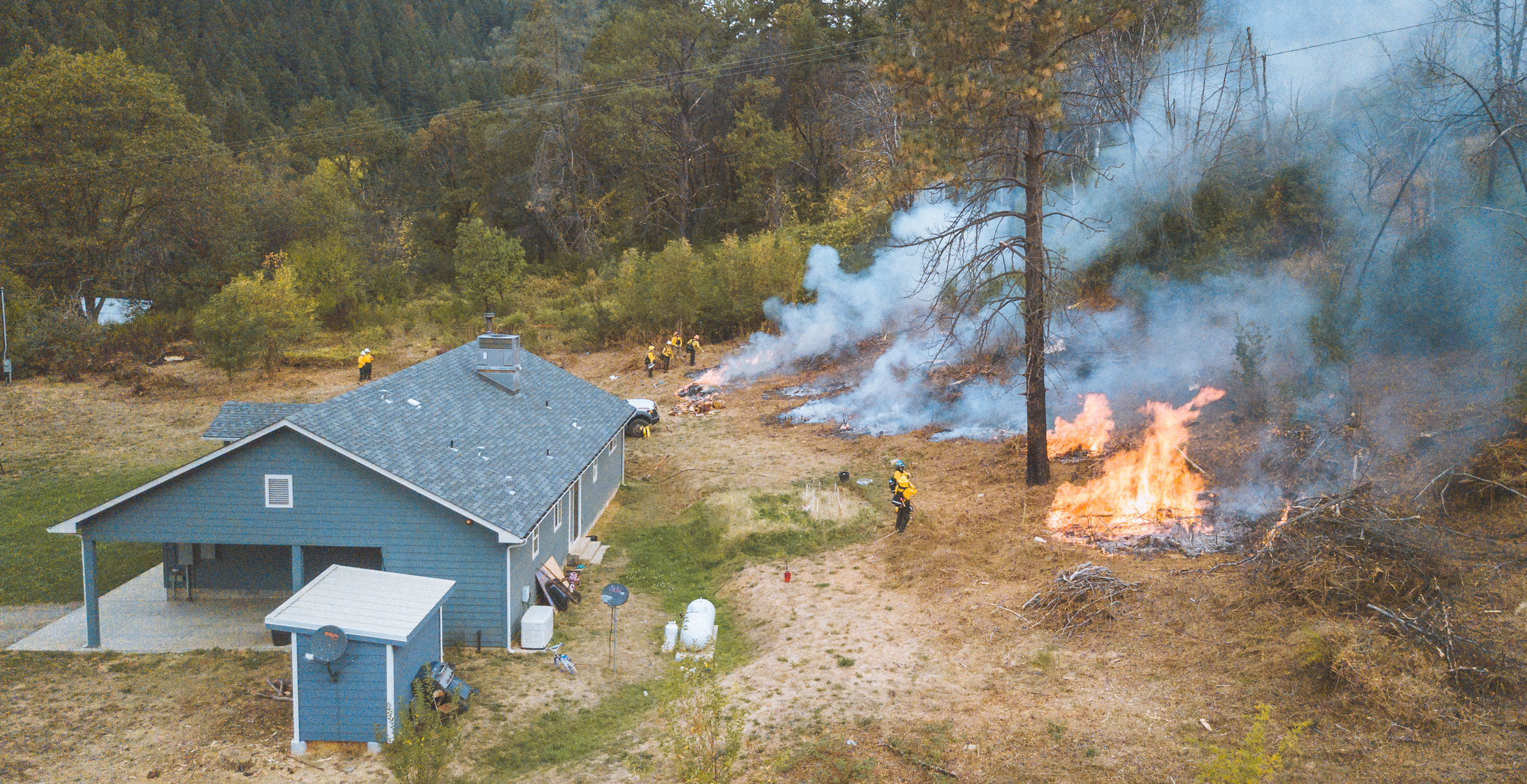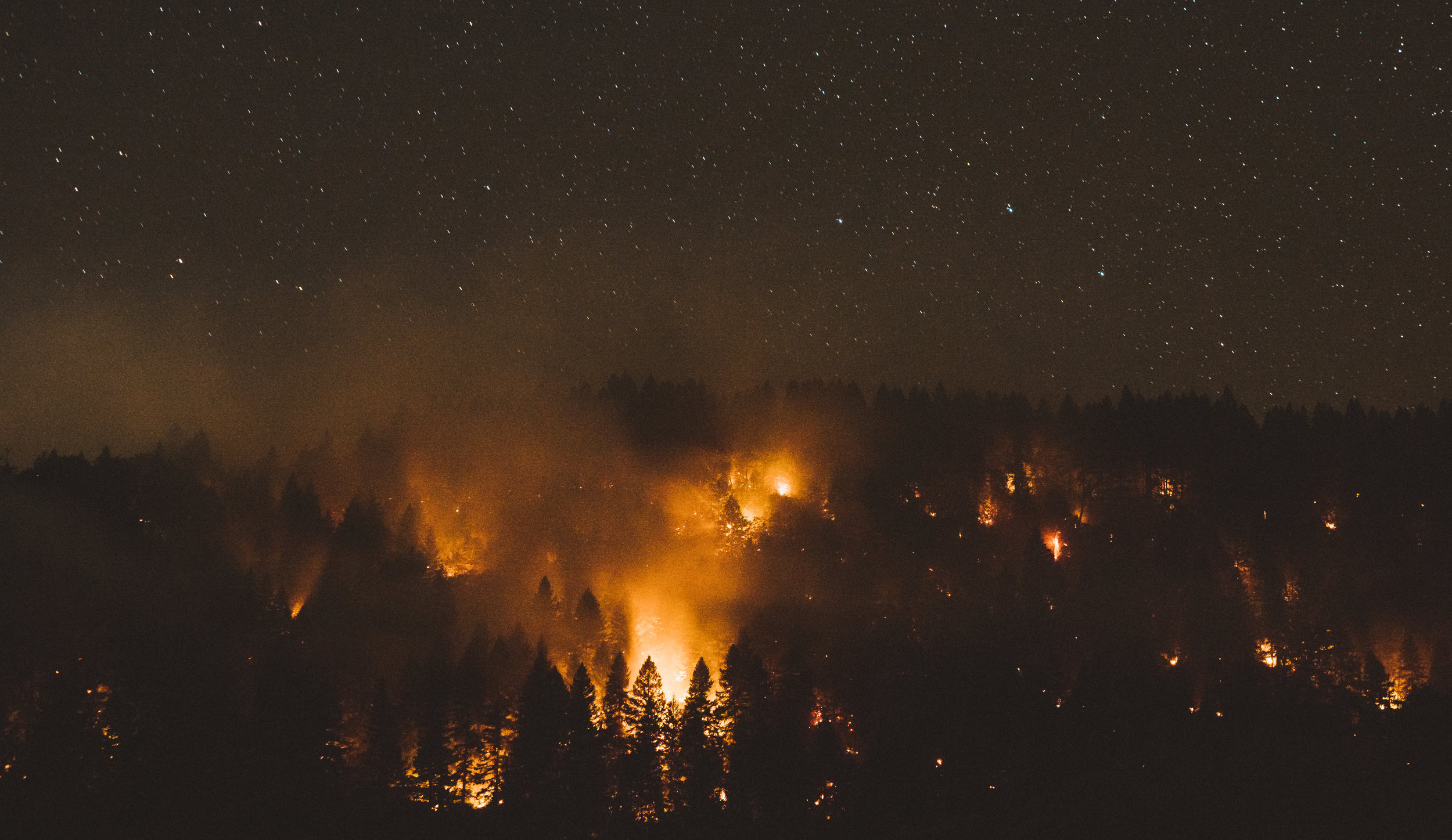KARUK
“Karuk people have had a role in functional fire processes for thousands of years. Fire has been regulated out of our hands in this past century. The Klamath River TREX prescribed fire training is a great example of how indigenous people around the world can help lead community-based solutions that address the social, economic, and ecological issues of our age,” said Bill Tripp, the Karuk Tribe’s Deputy Director of Eco-cultural Revitalization.
During the first two weeks of October we got to document the Karuk Tribe’s annual prescribed fire management training on their ancestral lands along the Klamath River in Northern California. People traveled from around the globe to come to this unique training where the Karuk fire lighters passed on their wisdom and expertise on using fire as a tool to keep the landscape healthy and protect communities from the dangers of wildfires. The Karuk Tribe’s prescribed burn team are seen here working with the TREX group to continue their ancient tradition of prescribed fire management on their ancestral lands. Winds were in favor as the meadows of the Tishawnik ceremonial grounds burned. Prescribed fire has endless benefits for the landscape and the people that inhabit them.
Sunset on a beautiful prescribed fire meadow burn at the Karuk Tribe’s ceremonial grounds Tishawnik. For the Karuk Tribe, Tishawnik is a very significant riparian meadow full of culturally important vegetation. Willow shoots used for basket weaving are harvested annually along with edible tubers and bulbs. Karuk tribal members alongside the TREX crew ignited the meadow burning dead grasses and invasive species. This place has been a ceremonial site for many generations for the Karuk “World Renewal Ceremony”. The fire management wisdom of the Karuk Tribe is extremely in today’s climate as the wildfires of the West Coast continue to break records in size and severity.
This burn eliminated fuel wood around a home to keep it safe from wildfire. The Karuk tradition of using fire to improve the ecology and keep homes safe is a guiding principal in this two week training. Brush pile burns significantly reduce the hazardous fuel loads along a rural road of houses. This work has been an integral part of Karuk land management for centuries. It successfully reduces wildfire risk and improves public safety. The team is preparing for a the final stage which is a low-intensity broad cast burn in the upcoming days.
“We put fire on the ground so the acorns can return!”
-Greg Arteche, Karuk K1
The Karuk tribe have depended on acorns for thousands of years as a staple in their diet and continue to this day to manage oak trees with fire to ensure a good harvest. A tank oak acorn lays in the scorched earth where the Karuk people have burned for thousands of years to improve the quality and quantity of these nuts. Research is now being conducted to show this process works to kill back bugs that live and breed in the duff layer and also to smoke out or fumigate the acorn bugs that are living in the branches. Western science is catching up to explain in English what has been known in Karuk for a millennia.
Stormy demonstrates making acorn soup with hot stones she heated in the fire that is also cooking the fresh caught salmon. Native American day at Junction Elementary School was an amazing opportunity for students to learn about many of the Karuk traditions here in their ancestral lands. Both fish and acorn health are related to prescribed fire! Kids at the local Junction Elementary School get to dive deeper into Tan Oak acorn processing on Native American Day and learn about this Karuk tradition. Cracking and sorting acorns before lunch.
“There is now research showing a beneficial relationship between prescribed fire management and the health of the salmon. Western science is just beginning to understand why the Karuk have these traditions, ceremonies and beliefs”. -Dr. Frank Lake, Karuk Descendant
This Salmon was caught at Ishi Pishi Falls, a sacred dipnet fishing site for the Karuk people. Seeing smoke in the landscape gives the Karuk fishermen hope that by restoring the forests the ecosystem will in turn help their salmon regain strength.
“Low intensity fire management add lots of charcoal into the soil which in turn helps the land absorb more water and acts as a filter as the water moves down into the streams and rivers. Fires clean water.”
-Rick O’Rourke, Yurok
Low intensity fire management continues as the Karuk and Yurok crew work their way through this tan oak forest.
“We are restoring the forest to how it was for a millennia, managed by Karuk people for better quality acorns, medicinal plants and elk habitat.”
-Karuk Tribal Member Herman Albers
Night burn at a private oak woodland during the second week of TREX fire management training. The Karuk are returning fire to the forest to help heal the 100+ years of fire exclusion policies enforced by the US government. Traditional Ecological Knowledge is the key for this country to avoid ecological collapse.







